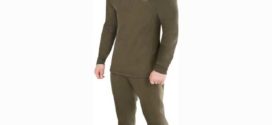Points of sale of this type of optics are found almost at every turn. Manufacturers are constantly replenishing the range of sunglasses, so there are no problems with their purchase. But what are we mainly guided by when making such a purchase?
If you list all the criteria for choosing sunglasses, then “how do they look on me?” comes to the fore. Yes, this is important, depending on the shape of the face and so on. But at the same time, few people think that the main purpose of glasses in this category is still not decoration, but protecting the eyes from sunlight, or rather, from ultraviolet radiation. What sunglasses are most effective in this parameter, how to choose it according to the type of protection, and correctly, you should understand in more detail.
Content
Criteria for evaluating sunglasses
The main “protective element” of optics is lenses. What characteristics should you pay attention to?
Material - glass
Sunglasses are not the best choice. The only plus is that such lenses practically do not scratch. But there is a whole “package” of shortcomings.
- Firstly, this optic is heavier than analogues with plastic lenses. In hot weather, the difference is especially felt.
- Secondly, the price of glasses is much higher.
- Thirdly, and most importantly, this type of lens of such glasses practically does not “extinguish” ultraviolet. Therefore, it does not fulfill its protective function.
- Fourthly, it is impossible not to take into account the factor of injury risk. This primarily applies to tourists and motorists, although not to them alone. Glass, including sunscreen, breaks easily. The consequences for the eyes need no comment.
- Fifth, glass lenses fog up quickly. This is especially pronounced when the weather changes.
Plastic
The main advantages are the light weight of the glasses, durability (on impact) and low cost. However, not everything is so simple here. Cheap sunglasses only partially block UV rays. They are more efficient than glass analogues, but not so much as to speak of absolute leadership in this indicator.
Varieties of lenses
Photochromic
The degree of "quenching" of the luminous flux practically does not change regardless of the level of illumination. For people who are harmed by bright light (for example, with some eye diseases) or simply do not like it (vision features) - the best choice.
polarizing
With such lenses of light-protective glasses, the eyes “adapt” to the situation faster even with a sharp change in light intensity.
There are a number of rules for testing polarized glasses:
- It is enough to increase the brightness of the glow of the cell phone screen (up to the maximum level), put on glasses and gradually turn the smartphone. When changing the viewing angle, the lenses should darken, up to absolute opacity.
- Specialty optical stores have holograms designed to test the effectiveness of polarized sun lenses. The drawing is invisible to the naked eye, but through glasses it should be clearly visible.
There are other methods, for example, with two pairs of glasses. But it is unlikely that any of the sellers will agree to experiment with several glasses, since it remains to be seen whether they will be purchased. Although these two verification methods are quite enough to distinguish a quality product from a fake.
about how to choose binoculars here .
Glass color
You should not choose sunglasses on the principle of "darker lenses - more protection." It is not right. What color, and to what extent it distorts the luminous flux - that's what you should know and consider. We must not forget that too dark lenses gradually affect vision, and not in the best way.
Before choosing sun protection optics for this parameter, it is advisable to consult an ophthalmologist. This is especially true for people who already have vision problems.
Degree of protection
This is probably where you should start. But there are few recommendations on this point. The categorization of sunglasses is simple (ascending) - from 0 to 4. That is, there are only 5 degrees. If the product is from a well-known manufacturer, then the corresponding marking (except for the value indicated in the certificate) can be placed on one of the lenses in the form of a miniature sticker.
Conclusion
- When choosing sunglasses, you should take into account what exactly they are purchased for, that is, the specifics of their use. If they are for everyday wear, then the best option is a "chameleon" with gray (green) lenses. As they say, "for all occasions."
- If you think about effective eye protection, then the degree should not be lower than the third. In high light conditions (in the mountains, at a resort, and so on) - 4th.
Hello, I am Alexander, the mastermind behind the blog.
In terms of career and free time, I connected my life with the forest. How else, when you live in Karelia! In this blog, I am responsible for the hunting, hiking and equipment sections. Welcome to my world!
 Survival Lessons Tips for the survivalist, fisherman and hunter
Survival Lessons Tips for the survivalist, fisherman and hunter





